SERVICES CONFIGURE, PRICE, & QUOTE (CPQ)
The only CPQ software built for services organizations.
Workday Services CPQ software was designed to streamline the quoting process for service businesses like yours—bringing speed, accuracy, and confidence to the way you quote opportunities.
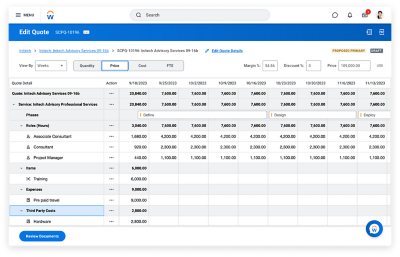
Efficient and accurate quotes.
Workday Services CPQ provides the quoting capabilities services organizations need to quickly and accurately sign new business. It automates downstream opportunity-to-cash processes, and delivers insight into resource demand.
-
Integrated with CRM systems
-
Centrally controlled quoting
-
Automated proposal and draft contract creation
-
Resource demand visibility
-
Dynamic quote building
-
Streamlined opportunity-to-cash process
What Sets Us Apart
Optimizing revenue and PSA starts with Services CPQ.
See how Workday Services CPQ unites sales, services, internal operations, and finance to improve accuracy of the quoting and downstream opportunity cash processes.
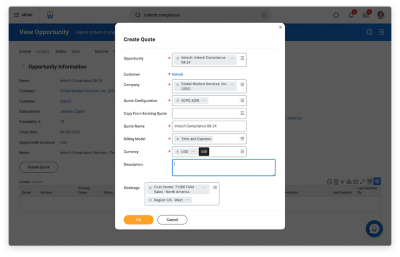
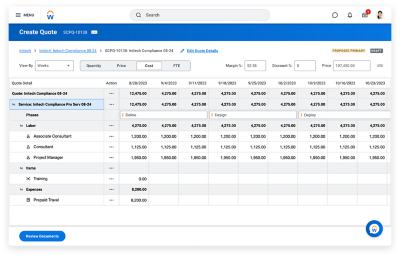
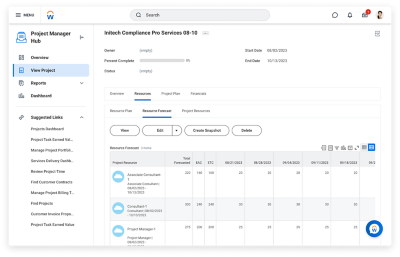
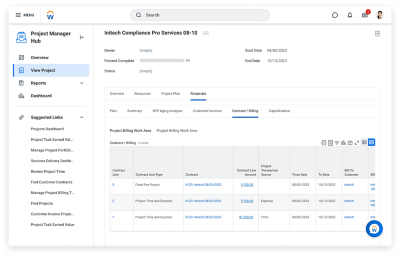
A services CPQ solution for your needs.
Generate quotes based on roles, phases, tasks, rates, and other items specific to the services industry.
Close business faster.
Replace spreadsheets with automated quoting for a more efficient, consistent, and accurate quoting process.
Surface deeper insights.
Quotes capture data elements that enrich the understanding of demand, allowing you to plan and forecast projects effectively.
Adapt as you go.
Dynamically create and edit quotes and related documents while keeping stakeholders in the loop.

A services CPQ solution for your needs.
Generate quotes based on roles, phases, tasks, rates, and other items specific to the services industry.

Close business faster.
Replace spreadsheets with automated quoting for a more efficient, consistent, and accurate quoting process.

Surface deeper insights.
Quotes capture data elements that enrich the understanding of demand, allowing you to plan and forecast projects effectively.

Adapt as you go.
Dynamically create and edit quotes and related documents while keeping stakeholders in the loop.
Services CPQ FAQs.
What is Services CPQ?
Services CPQ (configure, price, quote) is designed to address the services quoting needs of professional services organizations.
How is Services CPQ different from a product CPQ?
While most CPQ solutions are designed to quote products, Services CPQ is uniquely designed to address quoting service-centric scenarios, which demand very different capabilities—for example, project workers rate, availability, duration, and non-labor items such as travel.
What sets Services CPQ apart?
Services CPQ helps Workday users complete the opportunity-to-cash process by uniting services quoting with downstream processes such as projects, billing, revenue recognition, collections, reporting, and planning, which leads to better project margins.
Is Zimit now Workday Services CPQ?
We acquired Zimit in 2021, and have replatformed it in Workday for a complete, more streamlined opportunity-to-cash process.
Ready to talk? Get in touch.
Workday Services CPQ—Important Notice
Our future product content describes announced products that are not yet generally available and contain forward-looking statements for which there are risks, uncertainties, and assumptions. Our description of unreleased services, features, functionality, or enhancements are subject to change at Workday’s discretion and may not be delivered as planned or at all. Workday assumes no obligation for and does not intend to update any such forward-looking statements. Customers who purchase Workday services should make purchase decisions based upon currently available services, features, and functions.